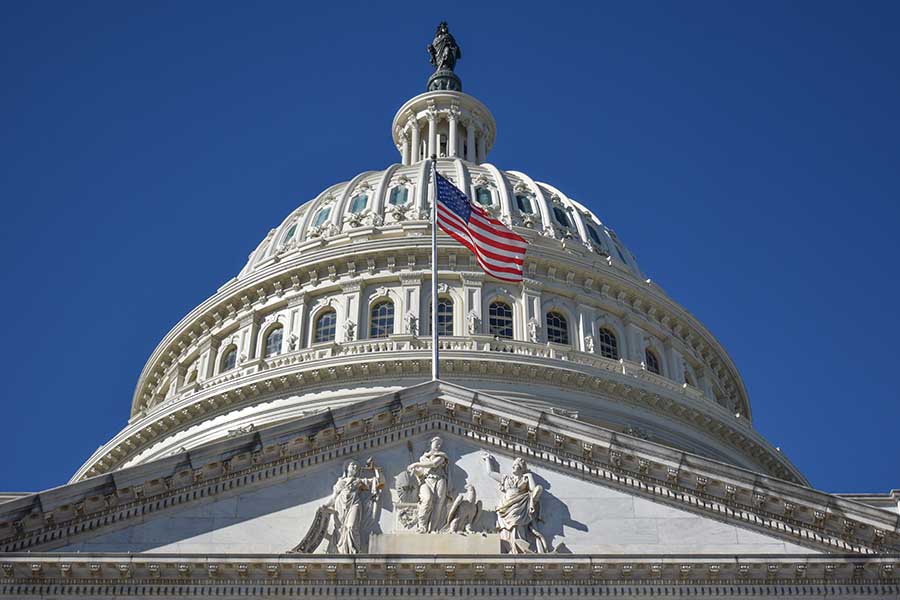Asset Management
What Is the Debt Ceiling and Why Does It Matter?

Debt ceiling battles are nothing new on Capitol Hill: Congress has raised the limit 78 times since 1960. But during the past two decades, what was once a routine vote has become one of the most politically contentious issues that Congress faces. But what is the debt ceiling, and why does it matter?
Ahead, we'll cover key topics including:
- What is the debt ceiling?
- Why do markets care?
- Has this happened before?
- What impact would a default have on U.S. stocks?
- What impact would a default have on money market funds?
- What does this mean for investors who hold U.S. Treasury securities?
What is the debt ceiling?
The debt ceiling is the total amount the U.S. government is authorized by Congress to borrow to meet its existing obligations, including interest payments on Treasury securities. The federal debt is currently $36.1 trillion. The government hit the debt ceiling in January 2025. Since then, the Department of the Treasury has been using accounting maneuvers (referred to as "extraordinary measures") to stay under the U.S. debt limit and continue to pay its obligations, including Social Security and Medicare.
It's not known exactly when the U.S. will reach the "X-date" when it runs out of cash and the extraordinary measures are exhausted. Treasury Secretary Scott Bessent wrote to Congress on May 9th that it was likely to occur in August and urged lawmakers to raise or suspend the debt limit in July, before Congress goes on break.
Why do financial markets care?
If the U.S. government should fail to make interest payments on Treasury securities, it would have "defaulted" on its legal debt obligations for the first time in history, and the market reaction likely would be very negative. That's because default could lower the credit rating for Treasury securities, making them appear riskier to investors, who can be expected to demand higher yields as compensation. Higher Treasury yields can push up other borrowing costs via rising interest rates, including mortgages and auto loans, leading consumers to delay or forgo purchases and potentially slowing the U.S. economy.
A lower credit rating also could hurt foreign investors' perception of the U.S. as a "safe" investment, leading them to reduce their Treasury holdings and further raising Treasury yields, which typically move inversely to Treasury prices.
Has the U.S. ever defaulted on its debt?
The U.S. has hit the debt ceiling before but never defaulted on its debt obligations. Treasury securities are backed by the "full faith and credit" of the U.S. government, and the government's credit historically had been perfect: For decades, it was rated AAA/Aaa, the highest possible rating, by all three major credit rating agencies. 1 That changed in 2011, when S&P downgraded its rating to AA+ during a debt ceiling battle. Fitch downgraded the U.S. to AA+ in 2023 following another debt ceiling battle, and Moody's downgraded it to Aa1 in May 2025, citing rising government debt.
What impact would a national debt default have on U.S. stocks?
We don't know, but it probably wouldn't be good. Investors may recall that the S&P 500 index was very volatile in May 2023 as Congress tried to reach a deal on the debt ceiling before the government ran out of cash on June 1, 2023—ultimately, a bill passed Congress on June 1 and was signed by the president on June 3, avoiding a default.
What impact would a default have on money market funds?
If Treasury securities default, it could trigger SEC Rule 2a-7, which generally requires a money market fund to sell a defaulted security. However, the rule allows a money market fund to continue to hold the defaulted security if the fund's board of trustees determines that its sale would not be in the best interests of the fund and its shareholders.
What does this mean for investors who hold U.S. Treasury securities?
In the event of a default, repayment of maturing Treasury securities could be delayed until the debt ceiling is raised. Assuming an agreement eventually is reached, investors would receive their interest and principal payments, likely with extra accrued interest.
Treasury investors may want to:
- Consider the consequences of a delayed repayment for Treasury securities that mature soon after the potential default date. If you are relying on an on-time payment of a maturing Treasury security, consider whether there are other solutions available for covering that spending.
- Focus on high-quality, higher-rated investments, rather than corporate junk bonds or emerging-market bonds. If the economy should weaken or the U.S. government default, those high-risk debt instruments likely would come under the most pressure.
What is the likelihood of default in 2025?
Congress is aware of the approaching deadline and the importance of raising the debt ceiling and avoiding a default. The "One Big Beautiful Bill Act" that was approved by the House on May 22nd, 2025, includes a $4 trillion increase in the debt ceiling. That should be enough to ensure that the debt ceiling is not an issue again until 2027. The Senate is expected to consider the legislation in June. Both the House and Senate will have to agree to the same legislation before it can be sent to the president for his signature. Leaders of both chambers are optimistic that can happen in July—likely in time to avoid a default.
1 The Moody's investment grade rating scale is Aaa, Aa, A, and Baa, and the sub-investment grade scale is Ba, B, Caa, Ca, and C. Standard and Poor's investment grade rating scale is AAA, AA, A, and BBB and the sub-investment-grade scale is BB, B, CCC, CC, and C. Ratings from AA to CCC may be modified by the addition of a plus (+) or minus (-) sign to show relative standing within the major rating categories. Fitch's investment-grade rating scale is AAA, AA, A, and BBB and the sub-investment-grade scale is BB, B, CCC, CC, and C.
